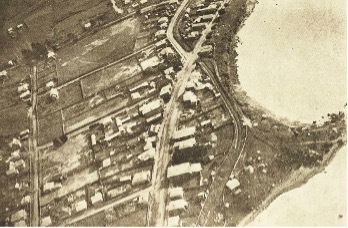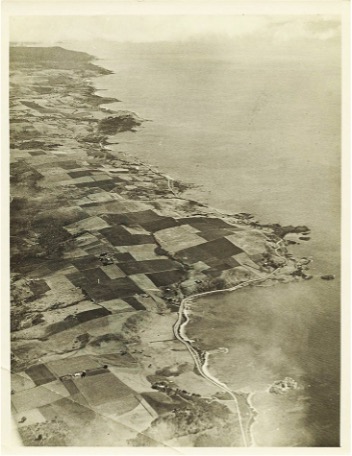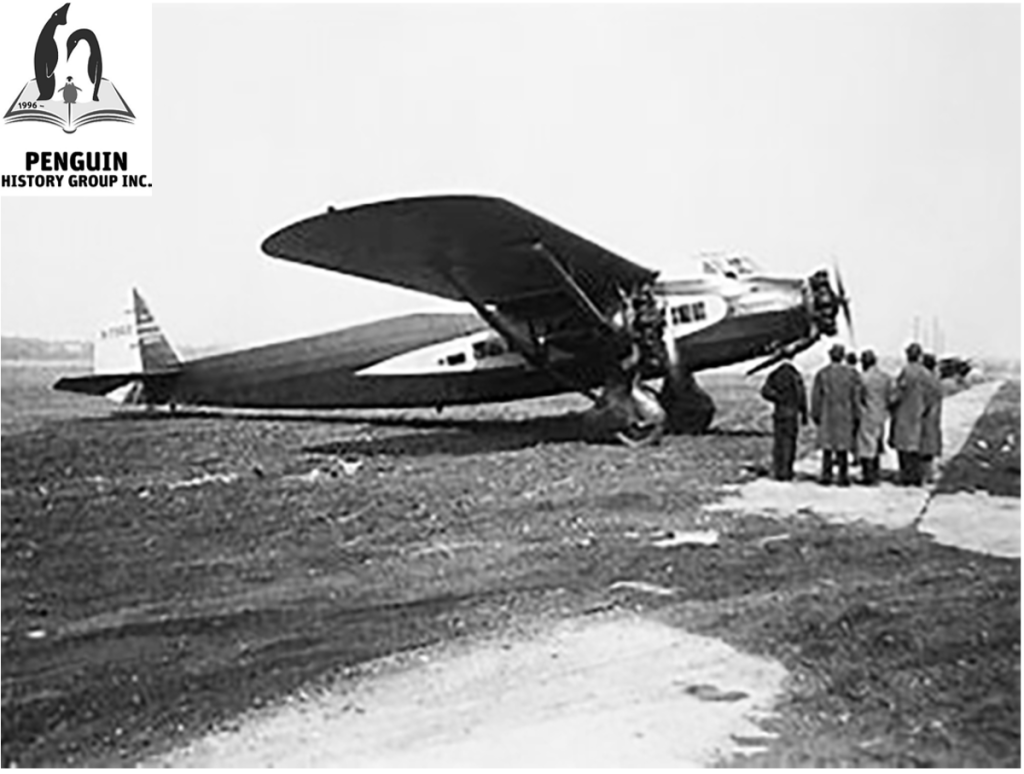By Craig Dunham
Penguin’s first exposure to the wonders of flight came courtesy of local inventor GS Richardson who designed a “bicycle plane” in 1907. Two smallpropellers were fitted to the main plane, manufactured in fabric. The rudder was also of fabric. To ensure safety
in landing, a landing skid was attached to the bicycle, and this proved more effective than merely relying on the cycle wheels. It was built in 1907 and was “flown” by Dr. Henty from Wat- combe Hill to Watcombe Beach at Penguin. Advocate, 23 May 1950, page 7
A major innovation which was fast tracked by the war was the discovery of manned flight. With the coming of peace, aeroplanesemerged as a new mode of transport. Penguin was not immune from the excitement and anticipation.The first recorded mention at Penguin occurred in September 1919 and was associated with the promotion of Peace Bonds. In order for the plane to land the community was expected to commit to a target of £ 6800 – a target which was never achieved so the excitement was limited to a flyover of sorts.
“Intense, excitement, prevailed as the Peace Bond ‘plane passed over at about ll o’clock Saturday morning. All eyes were heaven- ward in anticipation of the sight. The ‘plane could be seen before it reached Ulverstone, at which place some of its evolutions were discernible from Penguin. A few minutes only seemed to elapse, and the sound of the ‘plane was heard. As it approached the ringing ofthe firebell made everyone bestir, and the whole town witnessed the novel sight. The aviator looped- the-loop over the town, then sped on its way. A message from the ‘plane was secured just outside the town stating: “Secure your quota and I will come down.” Advocate 15 September 1919, page 2
Only a decade after the discovery of manned flight, pioneering aviators and photographers were taking and publishing aerial views of various Tasmanian locations including Penguin!
The photo below was published in the “Weekly Courier” on September 24, 1921. It was photographed by H J King from Captain F Huxley’s aeroplane.

In terms of historical perspective, this photo of Penguin is invaluable in terms of recording patterns of development. Some obvious examples include –
- The existence of the present road and street pattern as well as the railway which arrived in 1901.
- The very undeveloped playing area at the Penguin Recreation Ground, 15 years after its opening!
- The Primary School situated on the southern side of King Edward Street – this was 4 years prior to the start of construction on the “new” school.
- Both hotels well established with the original Thomas building adjacent.
- Albion House and the Ballantyne cottages in the fore- ground along with the Railway cottage overlooking Watcombe Beach.

Coastal road taken in 1921.
The first recorded landing was undertaken by Captain F Huxleywho conducted several flightscarrying passengers from Preservation Bay as recorded in “The Examiner” on April 27, 1922.
Without doubt, the most celebrated visit was that of the “Red Rose”, flown by William Lancaster in May of 1928, again landing atPreservation Bay. Prior to its arrivalthe pilot’s father was interviewed in the “Advocate”. “Mr. Lancaster, who hails from Birmingham (England), said he had been extremely delighted with Tasmania’s splendid reception to the Red Rose fliers, who were the first to complete a flight from England to Tasmania. The fact that the Red Rose had crossed Bass Strait, in a little over four hours inthe face of a 30 mile-per-hour gale, proved that aerial communication between Tasmania and the mainland was not only practicable, but essential. lt also indicated that future mail connections, etc., between the continent and the Island State must be by aeroplane. “I cannot understand” he declared, “why such a service was not established years ago, following on the wonderful pioneering work of Captain Huxley and others. At home we have planes working between Croydon and Paris, and thousands of people were carried between the two cities last year without a single casualty. That is an indication, I think, of the possibilities of an aerial service between Tasmania and the mainland.” Advocate Thursday 3 May 1928, page 4

Captain William Lancaster (1898-1933) was a pioneering
The Red Rose
British aviator. He had emigrated to Australia prior to the war where he joined the Australian Army and later the fledgling Australian Flying Corps. After the war he stayed in England and joined the Royal Air Force and later the Reserve. In 1928 he decided to make a name for himself by flying from England to Australia. He made this flight in the Avro Avian Red Rose, accompanied by Australian Jessie Miller, who helped finance the flight. It was at the time one of the longest flights made in such a small aircraft—although they were overtaken by Bert Hinkler in another Avian—and the first England–Australia flight by a woman. Huge crowds greeted them on arrival in Darwin, and on their subsequent tour around Australia, part of which included their Tasmanian visit. Soon after, they moved to America where Lancaster made a living selling British aeroplanes and Miller became an aviator in her own right, competing in the “Powder Puff Derby” in 1929. However, Lancaster is remembered for more than his aviation achievements. Refer to the internet regarding details of a murder trial he faced in 1932 before being acquitted. He then returned to England and in 1933 contested an air race from England to South Africa. Tragically, he was forced to crash land in the Sahara Desert. Although uninjured, he perished in the desolate sands, his body not being found for 30 years.